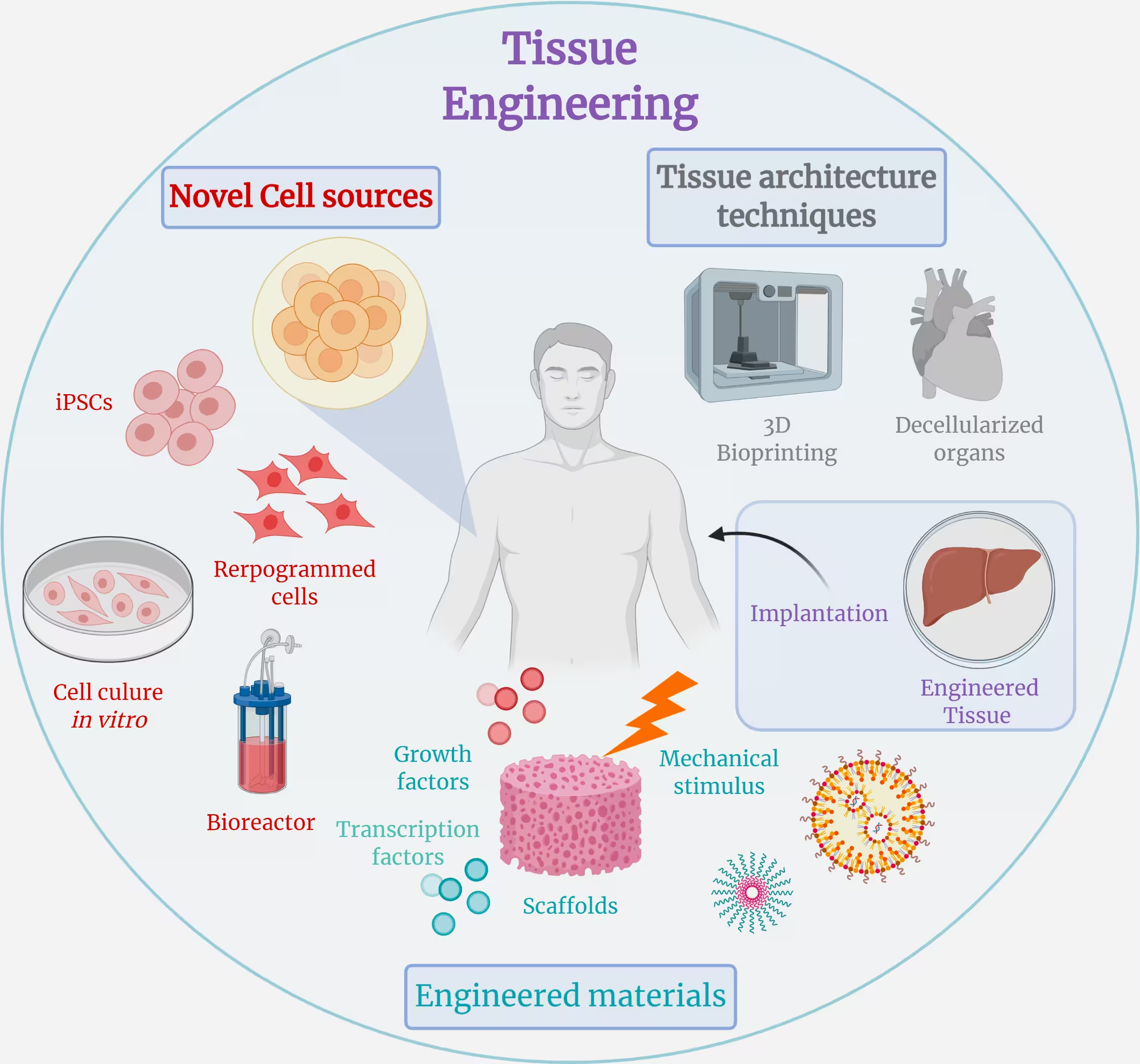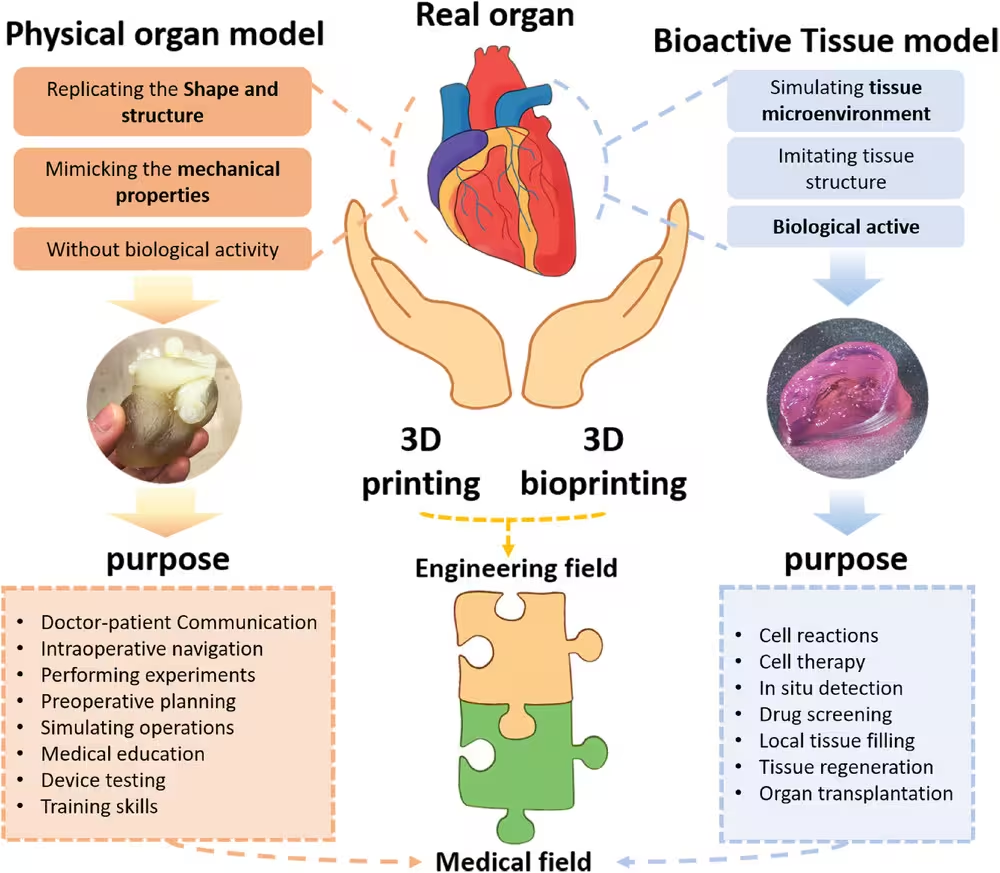Envision a society in which organ waiting lists are nonexistent. Imagine a world in which your own cells are used to create a new kidney, liver, or even heart for your body. This is not science fiction; rather, it is the rapidly developing field of bioprinting, a cutting-edge technology that could revolutionize organ donation.
Biocompatible materials (think injectable “inks”) and living cells are used in bioprinting, which is essentially 3D printing for tissues and organs, to create functioning structures. The intricate architecture of organs like the heart, with its network of chambers and valves, or the spongy liver, known for its detoxifying abilities, are mimicked in this sophisticated dance.

Why Is Bioprinting so important?
It is obvious that a solution is required. Based on information from the United Network for Organ Sharing (UNOS) at https://unos.org/data/, over 100,000 Americans are presently on the waiting list for an organ transplant. 22 people perish waiting every day. The conventional method depends on deceased donors, which has a small pool and strict matching specifications. Bioprinting presents a ray of hope.
The Fundamental Units of Life: Cells and Bioinks
Cells and bioinks are the two essential components of bioprinting. The building blocks are cells, which are frequently taken from a tissue sample provided by the patient. Bioinks, which are composed of a blend of biological molecules and polymers, function as a structural support by imitating the extracellular matrix (ECM) that naturally keeps cells in tissues together.
Researchers are always coming up with new ways to formulate bioinks. For example, researchers at Rice University have created a bioink that mimics the characteristics of bone by strengthening as it heals.

Printing Skin for Burn Victims
Layer-by-layer deposition of cells and scaffolding materials over the wounded areas is the process of three-dimensional (3D) bioprinting for burn injury reconstruction. In vitro or in situ methods for skin bioprinting can be used in this case. The only differences between these two methods are the printing place and tissue maturation.
Significant strides are being made in printing these simpler tissues. A poignant example is the work of Dr. Paolo Macchiarini at Karolinska Institutet in Sweden. His team successfully bioprinted skin grafts for burn victims, offering them a faster healing process and improved functionality.

Several countries are at the forefront of bioprinting R&D
-
United States: The US boasts a strong research infrastructure and private sector investment in bioprinting. Leading institutions like Rice University, Mayo Clinic, and Wyss Institute at Harvard are making significant contributions.
-
United Kingdom: The UK has a well-established tissue engineering and regenerative medicine sector. Institutions like the University of Oxford and Newcastle University are actively involved in bioprinting research, particularly focusing on skin and vascular tissues.
-
China: China has seen a surge in bioprinting research funding in recent years. Institutions like Tsinghua University and the Chinese Academy of Sciences are making strides in bioprinting complex tissues and organs.
-
Germany: Germany is known for its strong engineering and medical technology sectors. Fraunhofer Institute for Interfacial Engineering and Biotechnology (IBG) and the Karlsruhe Institute of Technology (KIT) are actively involved in bioprinting research, particularly focusing on biomaterials and bioprinting techniques.
-
South Korea: South Korea is another Asian nation making significant progress in bioprinting. The Korea Institute of Science and Technology (KIST) and POSTECH (Pohang University of Science and Technology) are leading research efforts in areas like bioprinting skin and cartilage.
Additionally, several European countries: like Sweden (Karolinska Institutet), Netherlands (University of Twente), and Switzerland (ETH Zurich) have active bioprinting research groups working on various applications.

Obstacles Up Ahead
There are many obstacles in the way of bioprinting completely functional organs. Vascularization, the process of establishing a network of blood vessels within printed tissue to carry nutrients and oxygen, is one of the main challenges. The printed organ would not survive in the absence of a functional circulatory system.
Simulating the complex cellular arrangement found in an organ presents another hurdle. Organs such as the kidney and liver rely on precise arrangements of particular cell types to function well. Researchers are looking into ways to fine-tune where cells are placed during printing.
Bioprinting : Raising ethical concerns
Issues around informed consent, intellectual property rights, and the potential for commercialization need careful consideration. Regulation of bioprinted products would be necessary to guarantee their efficacy and safety. This is the FDA’s responsibility in the United States.
Because bioprinting is a novel and experimental treatment, nothing is known about how printed organs will interact with the human body. As such, the FDA must ensure that printed organs are treated somewhat differently from genuine organs. There are trade-offs between free use and restricted use in bioprinting.
While open use allows for more freedom, restricted use restricts bioprinting to the hands of qualified professionals. Additionally, there are trade-offs between whether mass organ production is morally right and whether it would exacerbate problems in transplant situations. The rules that are in place to prevent the illegal trade in human organs may make it unlawful to sell bioprinted organs.
A Future Full of Promise
Despite the challenges, bioprinting holds true promise. The ability to create transplantable organs that perfectly match a patient’s immune system would revolutionize medicine. The future is not too far away where patients no longer face the constant threat of rejection, a future where organ waitlists become a thing of the past.
Bioprinting is not just about creating replacement parts; it’s about empowering the body to heal itself. It’s about offering a new lease on life to countless individuals waiting for a second chance. The journey may be long, but with continued research and collaboration, bioprinting has the potential to redefine the landscape of organ transplantation.
ALSO READ:
Amazing technological contribution of Science to Humanity in the 20th Century
Magical Trends of Health & Fitness in 21st Century






